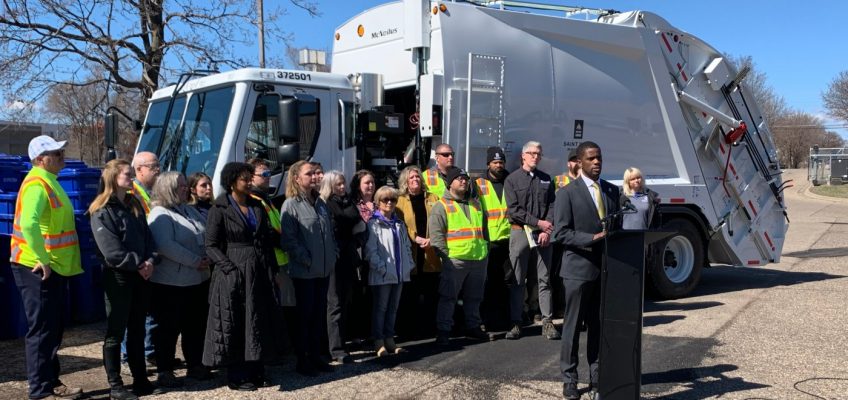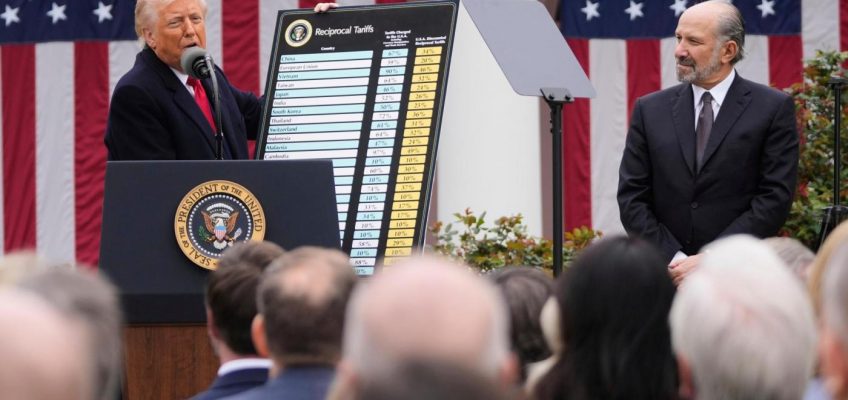FCC Environmental Services will continue to collect residential trash across the city of St. Paul using 560 Randolph Ave. as its base of operations, at least for the next 90 days.
At the urging of Mayor Melvin Carter, the city council voted 6-0 on Wednesday to extend the mayor’s emergency declaration, which temporarily overturned a zoning challenge that had left the trash hauler’s chosen dispatch and maintenance site off-limits just before the start of its citywide contract.
“I will be supporting this … because it’s a critical responsibility of the city to collect trash,” said Council President Rebecca Noecker, who had led efforts two weeks prior to block FCC Environmental from the site.
“I do this without changing my strong position,” she added, blaming the hauler for any last-minute fumbling. “I continue to believe this is not the right site.”
Dispatch center
Noecker said she expected that the mayor’s office and FCC Environmental will use the next 90 days to scout out a better location for what will be a $25 million dispatch center, maintenance facility and compressed natural gas station for the company’s trash trucks. FCC Environmental has made no secret that while it intends to launch service with about 30 trucks, that number might more than double as it expands its presence in the Twin Cities and adds more municipal accounts.
The hauler purchased the former Randolph Avenue tow lot last August and then sought official clarification from the city that its existing “light industrial” zoning would allow trash truck cleaning, maintenance and dispatch, as well as a compressed natural gas refueling station. In response, the city zoning administrator last January called the uses comparable to those of a Public Works yard, which is indeed allowed under “I-1” zoning.
Expressing concern about safety and environmental impacts on their residential neighborhood, members of the West Seventh/Fort Road Federation appealed that finding to the city Planning Commission, which supported the stance taken by city staff. The neighborhood federation then appealed again to the city council, which voted 5-0 on March 19 to support the appeal and overturn the zoning decision, with less than two weeks to go before the April 1 start of citywide trash collection under the new hauler.
State of local emergency
Carter then issued the council a strongly-worded letter, saying the council had “plunged the city into crisis.” He followed that up this week by signing a “state of local emergency” declaration that went into effect Tuesday, just as FCC Environmental was scheduled to begin collection on residential routes citywide.
The emergency declaration could only be for three days without further council action, which was granted Wednesday, but not without some words of warning from the council president. Noecker said the next 90 days should be dedicated to finding an alternate location, and “not be used to undermine the council.”
So far, it does not appear that the company is on board. The Planning Commission’s zoning committee is scheduled to review a site plan for FCC Environmental’s proposed truck facility on April 10, and the full Planning Commission will consider their recommendation a week later.
Related Articles
Former legislative aide sues Council Member Anika Bowie, city of St. Paul
St. Paul mayor declares state of emergency on trash collection
St. Paul City Council convenes but doesn’t appoint new Ward 4 member
Divided St. Paul City Council recommends new Ward 4 appointee for Friday vote
Jason Adkins: Measuring the economic impact of the Catholic Church in Minnesota




